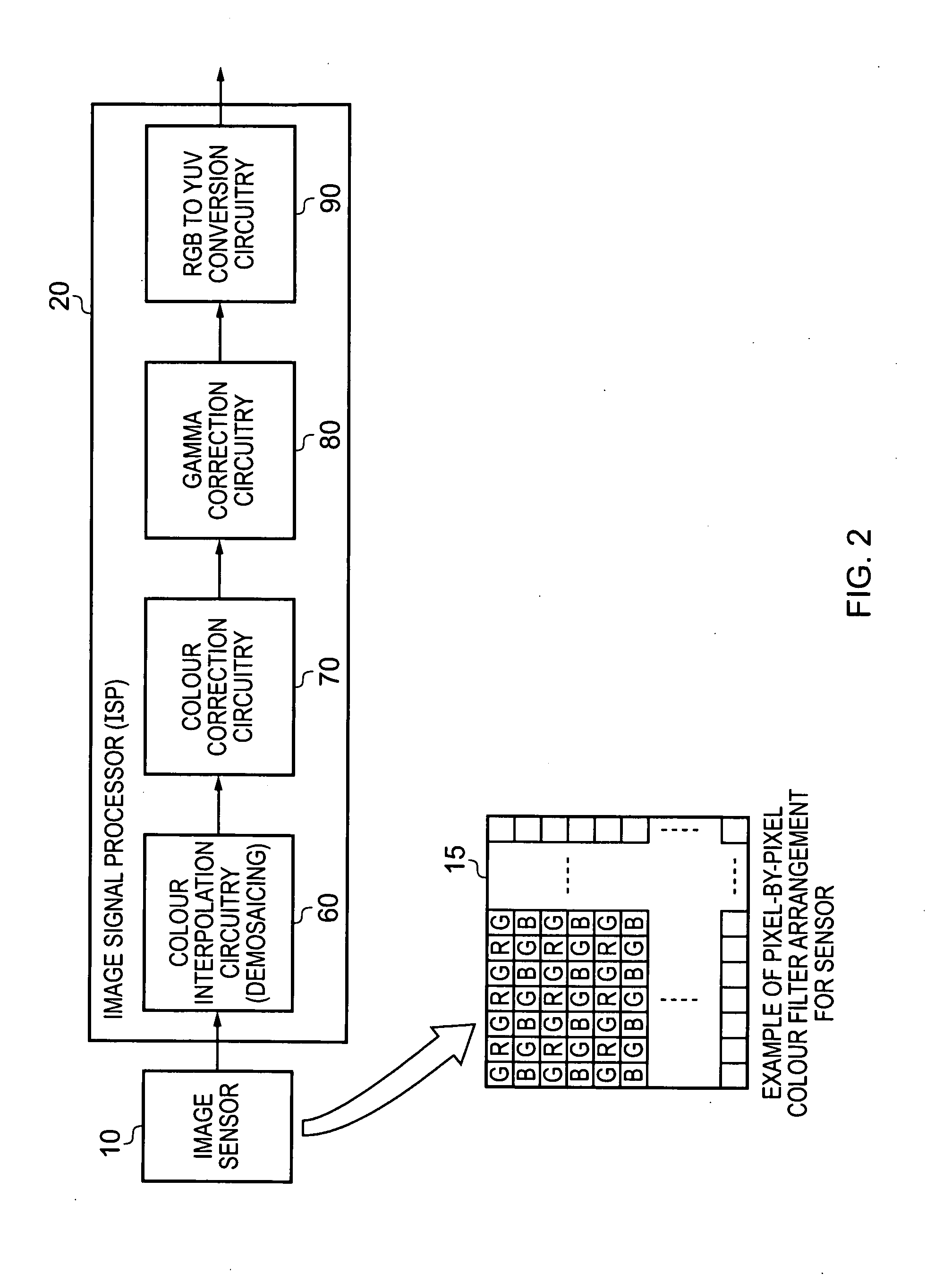Noise reduction filter circuitry and method
a filter circuit and noise reduction technology, applied in the field of noise reduction filter circuitry, can solve the problems of image noise, major limiting factor of digital video, random arrival rate of incoming photons, etc., and achieve the effect of reducing noise and reducing noise in an input stream
- Summary
- Abstract
- Description
- Claims
- Application Information
AI Technical Summary
Benefits of technology
Problems solved by technology
Method used
Image
Examples
Embodiment Construction
[0051]In accordance with an embodiment, a stream of YUV images is pre-filtered before being passed to a video encoder. FIG. 1 shows the intended application of the filter in accordance with such an embodiment. As shown in FIG. 1, a sequence of images forming a video signal are captured by a sensor 10, and are then subjected to some post-processing steps in an image signal processor (ISP) 20. In particular, the raw input data produced by the sensor is passed through several steps in an image pipeline within the ISP 20, resulting in the generation of an input stream of image signals in YUV format. This input stream of image signals suffers from noise introduced by the sensor 10, which is then typically modified and amplified by some of the functions performed within the ISP 20.
[0052]A filter 30 constructed in accordance with embodiments of the present invention is then used to produce a filtered stream of image signals in which the noise has been reduced, that filtered stream then bei...
PUM
 Login to View More
Login to View More Abstract
Description
Claims
Application Information
 Login to View More
Login to View More - R&D
- Intellectual Property
- Life Sciences
- Materials
- Tech Scout
- Unparalleled Data Quality
- Higher Quality Content
- 60% Fewer Hallucinations
Browse by: Latest US Patents, China's latest patents, Technical Efficacy Thesaurus, Application Domain, Technology Topic, Popular Technical Reports.
© 2025 PatSnap. All rights reserved.Legal|Privacy policy|Modern Slavery Act Transparency Statement|Sitemap|About US| Contact US: help@patsnap.com



